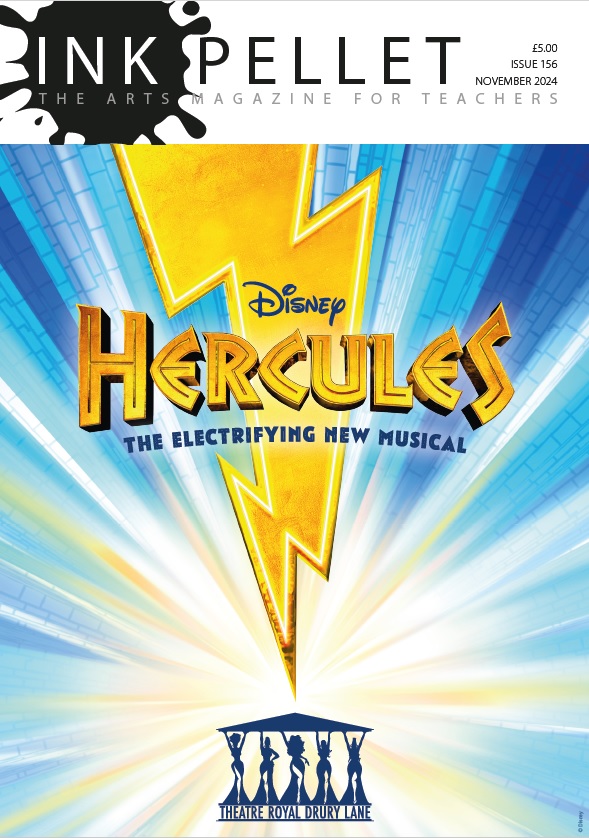Susan Elkin chats to James Grimsey, vocal coach and Creative Director at Arts1 School of Performance, about training a voice and dispelling a few myths.
The human voice is a very subtle and complex thing. And James Grimsey is utterly fascinated by it. “The more you learn about the voice and how it works the more interesting it becomes”, says James, an experienced voice coach who favours the Estill method of voice training.
Jo Estill was an American singer, 1921-2010, whose voice training method is now used worldwide (www.estillvoice.com). “It’s an anatomical approach” explains James. “You need to understand exactly how the voice is physically produced and how it relates to the rest of the body in order to learn to make the best use of it.” He mentions both laryngeal and cranial nerves in passing, for example and points out that every part of the body is an integral part of the whole. None of it works in isolation.
Another issue, James explains to me, is that good singers who teach tend to focus what they’re feeling rather than what they do so it can be tricky for the student to analyse what actually needs to be done.
James trained in musical theatre at Mountview Academy Theatre Arts where he met his future wife Rebecca Carrington, with whom he founded a performing arts school, Arts1, in Milton Keynes in 2006. He is an accomplished pianist and uses piano in class having not started playing until he was 16. “I’m largely self taught but when people drop Sondheim in front of you daily for 10 years you improve quite quickly” he quips.
“About 50 per cent of voice work is training the voice. The other half is training the person to accept the sound that they’re producing”
“When I left college, I started teaching voice. And, of course, at the start you simply pass on what your teachers have told you. Then I found Estill and realised that some of what I’d been doing was right and some was wrong!” He is now a Certified Master Teacher of Estill Voice Training.
He continues “Suddenly I started to take it all much more seriously.” James went on to teach at Northampton College, Mountview, Arts Ed and more. And he was Head of Singing at Birmingham School of Acting (now part of Royal Birmingham Conservatoire) for several years.
Almost everyone I’ve ever spoken to about voice has told me that breath is everything. Does James agree? He laughs. I’ve evidently said something controversial.
“Well actually most singing uses very little breath. In order to get a clear tone the vocal chords are closed. Most problems come because people try to force it. In fact the whole mantra of ‘supporting the breath’ is often counter-productive”.
Breathing, according to James is important but it isn’t everything. “We can all do it, after all” he says, with a grin.
“About 50 per cent of voice work is training the voice. The other half is training the person to accept the sound that they’re producing. Often that includes overcoming fear and inhibition,” says James.
Then there are all the old wives’ tales and stories which people feed to singers such as the advice not to eat curry or to eat lots of fruit. “Food has very little to do with it.” says James. “There are two main tubes through the throat – one for air and the other for food and drink!”
Water matters though. “Drink plenty of water but it should be at least twenty minutes before you sing”, says James. “It needs time to get into your body. Steam, of course, is different. Inhaling it really does give you instant hydration which is why there are so many steamers in the wings of West End theatres.”
And that, I learn, is why air conditioning can be a problem. “It sucks the moisture out and dries you out. Flying isn’t easy for a voice coach or singer on tour either, but there are things you can do to combat it.” James says.
Even the very well-established idea of a voice “warm up” isn’t necessarily always a good thing. “It can easily become a ‘wear out’” says James, cheerfully adding that sometimes it gets rid of the tension, but that everyone is different and what works for one person may not be right for another. “If you simply impose a generic activity on a group of people it might make things worse for some of them” he says. With his students, classes, choirs and groups he takes the very relaxed line: Do this if it works for you but don’t bother if it doesn’t.
Most of James’s work has been, and remains, with singers but almost everything he says can be related to the speaking voice as well as the singing voice – and that is relevant, of course, for classroom teachers who often talk almost all day.
“Being audible and protecting your voice from strain isn’t really about volume,” he says. “The key thing is to use consonants energetically. Listen to great actors and you’ll hear them overworking all the consonants in a word such as ‘kittiwake’ or ‘catapult’. If you make your consonants louder and longer, the vowels will look after themselves, you will be heard much more clearly and it will be much less of a strain on your voice.”
James’s ultimate aim when he is working with voice users is to train them to be independent. “I want them to get to a stage when they can sing (or speak) as well as they possibly can by themselves”.



